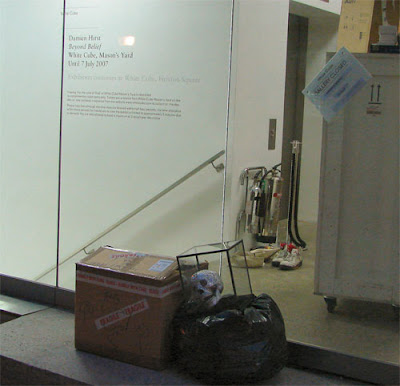Harun Yahya has been sending a lavish and highly amusing anti-evolutionary coffee-table book to research scientists and educators around the world. From the New York Times:
At 11 x 17 inches and 12 pounds, with a bright red cover and almost 800 glossy pages, most of them lavishly illustrated, Atlas of Creation is probably the largest and most beautiful creationist challenge yet to Darwin’s theory, which Mr. Yahya calls a feeble and perverted ideology contradicted by the Koran. ....
[UC Berkeley evolutionary biologist Kevin Padian] said people who had received copies were "just astounded at its size and production values and equally astonished at what a load of crap it is."
"If he sees a picture of an old fossil crab or something, he says, 'See, it looks just like a regular crab, there's no evolution,'" Dr. Padian said. "Extinction does not seem to bother him. He does not really have any sense of what we know about how things change through time."
My very favorite thing about the book is its visuals. Yahya uses images of evolution, most of them likely to have been cribbed from other texts, and slaps a red "X" with the word "FALSE" splayed across it. Take that, science!


Others he probably had created especially for the book - for example, this image of an alligator "evolving" into a chipmunk! Clearly FALSE!


To celebrate this highly entertaining rhetorical technique and its astonishing implications, I've developed some merchandise you can use to refute the existence of just about anything that is bothering you - your morning
cup of coffee, your
laptop or car, even
yourself! Make a statement to the world that you do not believe what might appear obvious to them -
tell them it's FALSE!
The clothing and other merch is all being sold to benefit the
American Association for the Advancement of Science, with all proceeds being donated to them. Check out what we have
in the store and help support an organization that works every day to
spread knowledge and understanding.
 John Nack writes:
John Nack writes:
























































